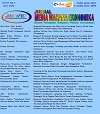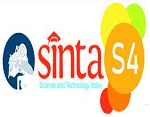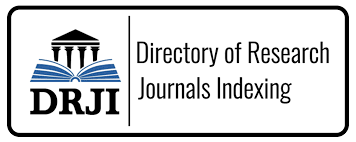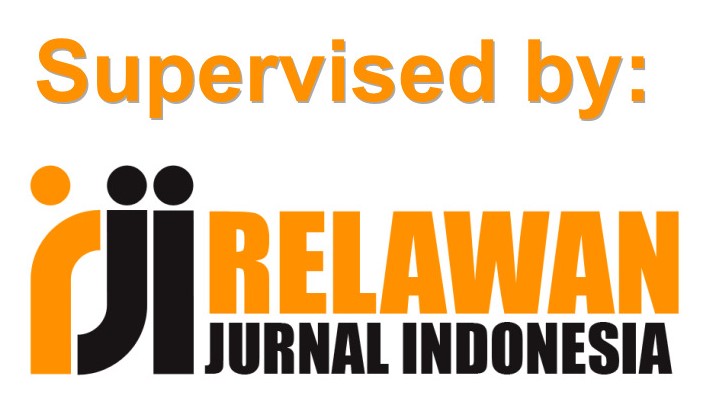Analisis Kinerja Organisasi Dengan Menggunakan Pendekatan Balanced Scorecard Pada Kelurahan Kabor Kabupaten Sikka
DOI:
https://doi.org/10.31851/jmwe.v19i1.8008Abstract
ABSTRAK
Â
Penelitian ini bertujuan untuk mengetahui gambaran kinerja organisasi Kelurahan Kabor ditinjau dari perspektif pembelajaran dan pertumbuhan, perspektif proses operasi internal, perspektif pelanggan dan perspektif keuangan. Sampel dalam penelitian ini dibagi dalam dua kelompok yaitu masyarakat Kelurahan Kabor sebanyak 150 orang yang digunakan untuk mengukur perspektif pelanggan. Berikut adalah pegawai Kelurahan Kabor sebanyak 13 orang yang digunakan untuk mengukur perspektif proses bisnis internal, perspektif pembelajaran dan pertumbuhan dan perspektif keuangan. Data dikumpulkan melalui quisioner dan dianalisis menggunakan analisis deskritif. Temuan penelitian menunjukan bahwa rata-rata skor total penilaian Kinerja Organisasi Kelurahan Kabor berdasarkan empat perspektif adalah 72.59%. Berdasarkan kriteria presentase tanggapan responden dapat disimpulkan bahwa Kinerja Organisasi Kelurahan Kabor termasuk dalam kategori baik. Selanjutnya rincian dari penilaian Kinerja Organisasi  dengan pendekatan Balanced Scorecard adalah: 1) Persentase tanggapan responden untuk perspektif pembelajaran dan pertumbuhan adalah 71.15% sehingga dikategorikan baik; 2) Persentase tanggapan responden untuk perspektif proses operasi internal adalah 73.08% sehingga dikategorikan baik; 3) Persentase tanggapan responden untuk perspektif pelanggan adalah 75.55% sehingga dikategorikan baik; dan Persentase tanggapan responden untuk perspektif perspektif keuangan adalah 70.58%  sehingga dikategorikan baik.
Â
Kata kunci: Pembelajaran, Pertumbuhan, Pelanggan, Keuangan
Â
ABSTRACT
Â
This research aims to find out the picture of the performance of the Kabor Village organization is reviewed from a learning and growth perspective, an internal operating process perspective, a customer perspective and a financial perspective. The sample in this study was divided into two groups, namely the Kabor Village community of 150 people who were used to measure customer perspectives. Here are 13 kabor employees who are used to measure internal business process perspectives, learning and growth perspectives and financial perspectives. Data is collected through quisioners and analyzed using deskritive analysis. The study findings showed that the average score of the total performance assessment of the Kabor Village Organization based on four perspectives was 72.59%. Based on the criteria of the percentage of respondents' responses, it can be concluded that the Performance of Kabor Village Organization falls into the category of good. Further details of the Assessment of Organizational Performance with balanced scorecard approach are: 1) The percentage of respondent responses to learning and growth perspectives is 71.15% so it is categorized as good; 2) The percentage of respondent responses to the perspective of internal operating processes is 73.08% so it is categorized as good; 3) The percentage of respondent responses to customer perspective is 75.55% so it is categorized as good; And the percentage of respondent responses to the financial perspective perspective is 70.58% so it is categorized as good.
Â
Keywords: Learning, Growth, Customer, Finance
References
Fauzi, (1995). Kamus Akuntansi Praktisi. Surabaya : Indah.
Keputusan Menpan nomor 63 tahun 2004
Mahmudi. (2007). Analisis Laporan Keuangan Pemerintah Daerah, Yogyakarta: UPP STIM YKPN.
Mulyadi. (2001). Balanced Scorecard Alat Manajemen Kontenporer untuk. Pelipat ganda Kinerja Keuangan Perusahaan. Jakarta : Salemba Empat.
Nur Indriantoro dan Bambang Supomo. (2002). Metodologi Penelitian Bisnis. Yogyakarta. BPFE.
Niven, Paul R. (2003). Balanced Scoredcard Step-By-Step Government and Nonprofit Agencies. Edisi Hoboken, New Jersey: Jhon Wiley and Sons, Inc.
Narimawati, Umi . (2007). Riset Manajemen Sumber Daya Manusia. Jakarta: Agung Media
Peraturan Pemerintah nomor 73 tahun 2005
Downloads
Published
Issue
Section
License
The copyright of the received article shall be assigned to the publisher of the journal licensed under a Creative Commons Attribution-NonCommercial 4.0 International License in line with the license, authors and any users (readers and other researchers) are allowed to share and adapt the material only for non-commercial purposes. In addition, the material must be given appropriate credit, provided with a link to the license, and indicated if changes were made. If authors remix, transform or build upon the material, authors must distribute their contributions under the same license as the original.























